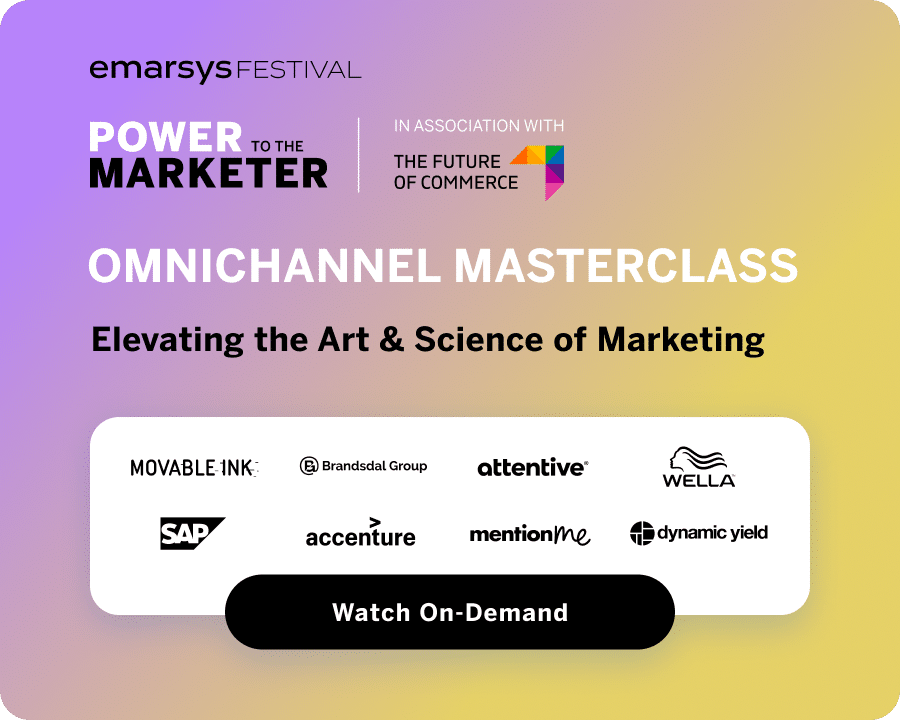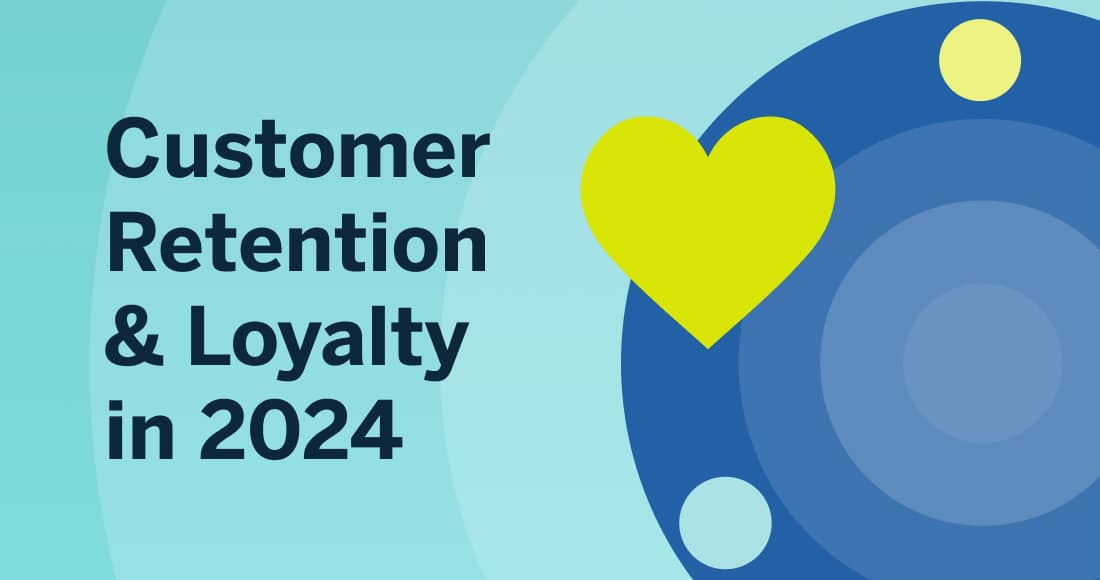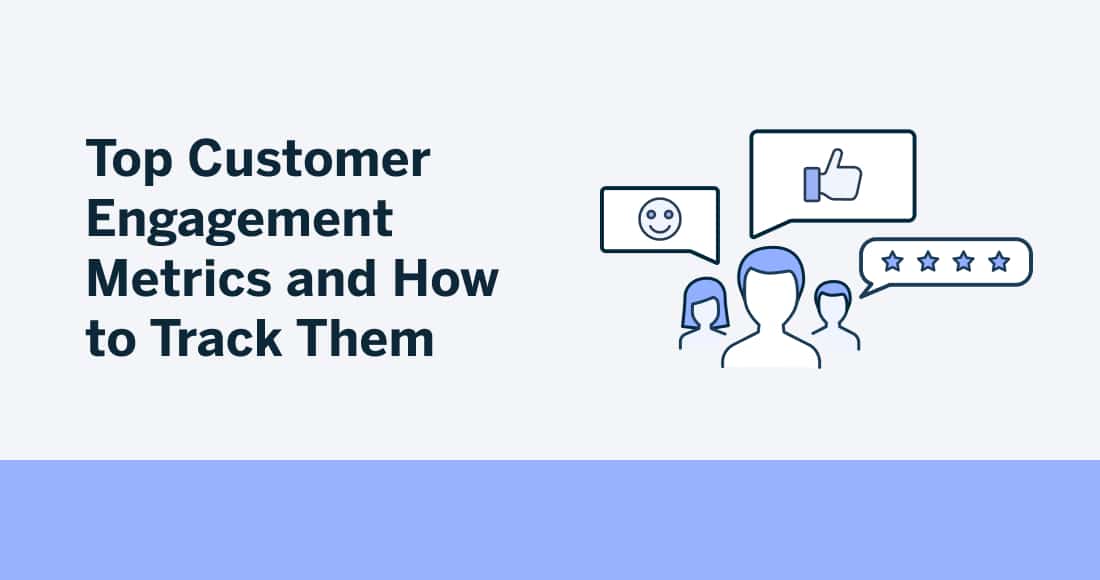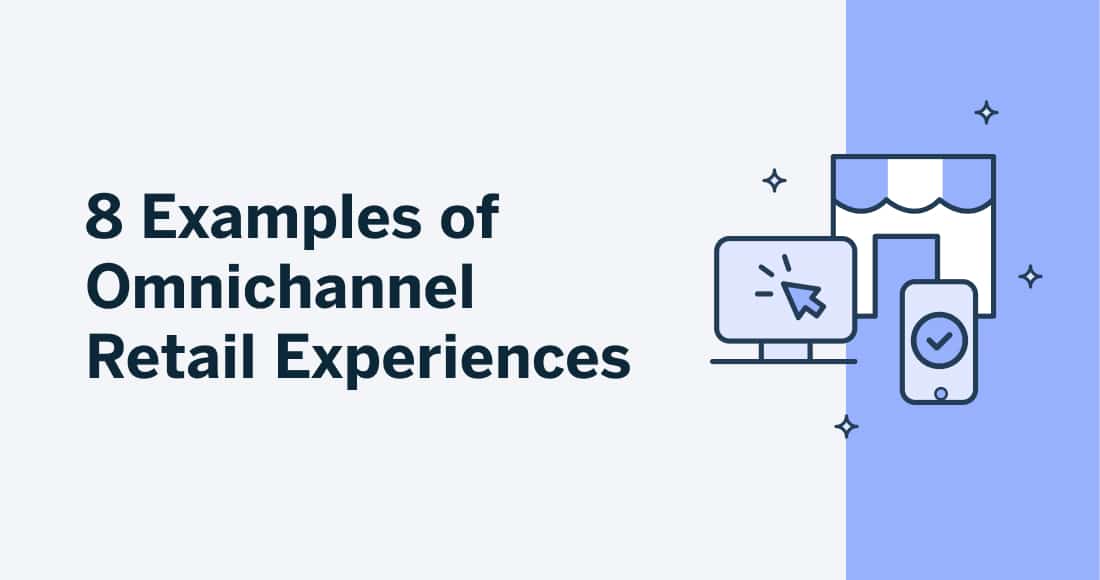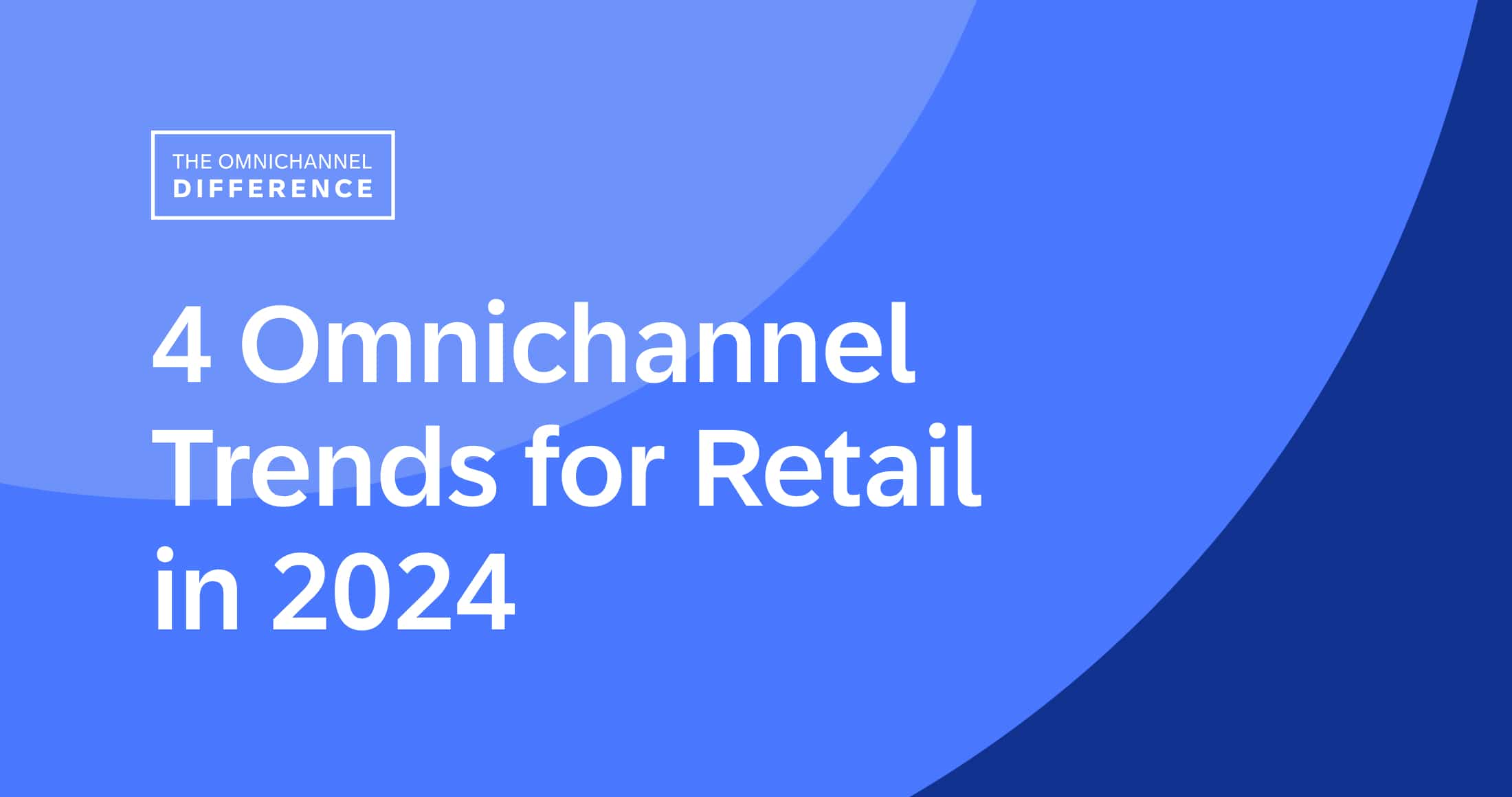In the last five years, “customer acquisition costs have increased nearly 60%,” and today’s merchants, on average, now “lose $29 for every new customer acquired.”
This statistic from Business Wire paints a picture of the stark reality marketers are faced with in 2024. Acquiring customers costs brands more than ever before, and those customers have never been as discerning and demanding of personalized experiences as they have today.
With an increasingly complex marketing landscape, and sky-high customer expectations, how can you drive the results your business demands?
The answer lies in retention and loyalty.
In this blog post, we dive deep into the retention and loyalty landscape, laying out the trends and strategies you need to know to keep your customers coming back in 2024.

What is Customer Retention?
Customer retention refers to the strategies and actions a business takes to maintain and increase the number of its existing customers.
This involves ensuring customer satisfaction, fostering loyalty, and creating long-term relationships, so that customers continue to purchase from the business rather than switching to competitors.
Effective customer retention results in repeat sales and increased customer lifetime value, but it goes beyond this. True customer retention is about empowering your customers to be ambassadors to your brand and driving positive word-of-mouth referrals, which are crucial for a business’s long-term success and profitability.
7 emerging trends shaping customer retention strategies
From leveraging cutting-edge technologies to embracing ethical practices, these trends are a roadmap for businesses looking to foster deeper customer loyalty and sustainable growth:
- Omnichannel engagement: With the demise of the traditional funnel, businesses can no longer push customers linearly along a precisely defined journey. From social media to web, and email to in-store, customers interact with brands across multiple platforms. As a result, integrating all these channels to provide a seamless customer experience is crucial.
- Customer obsession: Customers have access to more information, more touchpoints, and more choice than ever before. In response, businesses that want to drive retention and loyalty need to be “customer obsessed”. Embracing a customer-obsessed approach, as defined by Forrester Consulting, means putting customers at the core of all decisions and operations. Companies adopting this mindset are better equipped to foster long-term loyalty and evolve with their customers’ changing expectations.

- Sustainability and social responsibility: More consumers are choosing brands based on their environmental and social impact. Companies that demonstrate genuine commitment to sustainability and ethical practices are likely to see higher customer loyalty.
- Subscription-based models: The subscription economy is predicted to hit $1.5 trillion by 2025, and for good reason. Offering subscriptions gives customers a clear, simple way of reordering their favorite products, and it gives brands a seamless tactic for driving retention and Customer Lifetime Value.
- AI chatbots and customer support: Customers expect instant solutions to problems, and customer support has to keep up with these rising demands. Leveraging AI for customer support, like chatbots and virtual assistants, enables quicker and more efficient resolution of issues, improving overall customer satisfaction.
- Next-level loyalty programs: No more “Points and prizes”. Traditional loyalty programs are being revamped with more engaging, value-added experiences rather than simple, predictable transaction-based rewards. This includes personalized incentives and branded experiences.
- Educational content marketing: Focusing on bottom-of-funnel marketing isn’t enough. By providing educational content through post-purchase email automations, blog posts and short-form vertical video, you help your customers get the most out of their purchases and fully understand the benefits of buying from your brand.

Advanced metrics and technologies driving retention efforts
Customer behavior is constantly changing, and the marketing world moves fast to keep pace. From predictive analytics to artificial intelligence, constant innovations are reshaping the customer engagement landscape and providing valuable insights for businesses looking to build effective strategies.
Understanding and utilizing these tools and metrics is critical for companies looking to stay competitive and maintain strong customer relationships in today’s fast-paced market:
- Predictive analytics: By leveraging machine learning and data mining, predictive analytics can forecast future customer behaviors based on historical data. This can help you catch customers before they churn or defect to another brand, giving you time to implement lifecycle strategies that keep them shopping with you.
- Cross-channel personalization: Forward-thinking brands are leveraging AI technology to create highly personalized customer experiences at scale. From product recommendations to personalized email engagements, AI marketing tools can tailor experiences based on individual customer preferences and cross-channel behavior. When customers feel seen and understood, they’re more likely to come back.
- Voice of the Customer (VoC) programs: Advanced VoC programs utilize technologies like sentiment analysis and natural language processing to gather and analyze customer feedback across various channels. This gives businesses a deeper understanding of customer satisfaction and areas for improvement.
- Customer Engagement Platforms (CEP): Platforms like SAP Emarsys unify your data and marketing channels under a single system, powering more cohesive and connected customer experiences. If your brand uses multiple channels and touchpoints, a CEP will be crucial in managing and analyzing the impact of your marketing engagements.

What is Customer Loyalty?
In its simplest form, customer loyalty is a customer’s willingness to interact with a brand and its products on a regular basis. However, it extends beyond this.
Customer loyalty involves a deep-seated commitment from the customer, often characterized by repeated purchases and a preference for the brand over competitors, even in the face of price changes or market fluctuations.
This loyalty is cultivated through consistently positive interactions, trust in the brand’s quality and reliability, and often, emotional connections fostered by the company’s values, customer service, and engagement strategies.
Loyal customers not only contribute to steady revenue but also act as brand ambassadors, recommending products and services to others, thus amplifying the brand’s reach and reputation.
5 types of customer loyalty
When loyal customers are 64% more likely to purchase more frequently, and 31% are more willing to pay a higher price, it stands to reason that loyalty is crucial to the long-term success of your business.
However, it’s important to acknowledge that customer loyalty isn’t one-size-fits-all. It can be broken down into five distinct types, and it pays to know the difference among them:

- Incentivized Loyalty: This type of loyalty is cultivated by providing your customers incentives like discounts and rewards. It’s a great way to drive retention, but it’s the most shallow form of loyalty and it’s heavily influenced by price. All your competitors have to do to tempt these customers away is offer a better deal.
- Inherited Loyalty: This is based on a brand’s long-standing heritage and trusted reputation. However, brands can’t coast on the equity of their heritage for long. With customers becoming more demanding, it’s only a matter of time before your brand’s heritage loses relevance.
- Ethical Loyalty: These are shoppers that stay loyal to a brand because of its environmental, sustainability, and social policies. This type of loyalty is powerful and not easily broken, but on the other side, your ability as a marketer to control the factors that drive this loyalty is limited.
- Silent Loyalty: This occurs when customers shop regularly with a brand that they wouldn’t endorse publicly. This type of loyalty is hard to measure. You won’t be able to uncover your customers’ motivations for shopping with you, they won’t refer friends and family, and they’ll be quick to leave when they find a brand they’re happy to talk about openly.
- True Loyalty: This is the hardest type of loyalty to foster, but it comes from earning your customers’ absolute love and trust, and it’s unshakeable. True loyalty is long-lasting and offers the greatest return, but cultivating it requires a deep understanding of your customers and a solid strategy for building relationships at scale.

Changes to types of loyalty, as reported in the Emarsys Omnichannel Guide to Retention & Loyalty.
How to measure customer loyalty
Build these metrics into your marketing analytics to benchmark your current loyalty status and measure the impact of your ongoing strategy:
- Net Promoter Score: This is the gold-standard metric for measuring satisfaction By asking your customers “On a scale of 0 to 10, how likely are you to recommend us to friends and family?”, you’ll uncover not just how loyal your customers are, but also how willing they are to advocate for your brand publicly.
- Repeat Purchase Rate: Customers vote with their wallets, so a high Repeat Purchase Rate signals that your customers trust and value your products. By tracking how often customers come back to make another purchase, you’ll start to build a picture of how loyal they are.
- Customer Lifetime Value (CLTV): Track CLTV to measure the revenue impact of your loyalty strategy over time. A rising CLTV indicates growing loyalty towards your brand.
- Customer engagement metrics: Loyal customers don’t just stick around, they’re also more likely to engage with your content and talk about your brand. Although tricky to directly correlate to loyalty, increased engagement across your marketing channels and more people talking about your brand online is a good indicator that your strategy is moving you in the right direction. This makes tracking customer engagement an important step for growing brands.
Understanding the Difference: Customer Retention vs. Customer Loyalty
While often used interchangeably, customer retention and customer loyalty are distinct concepts in the world of customer engagement marketing.
Customer Retention refers to the ability of a company to keep its customers over a period. It’s a measure of how well a business maintains its existing customer base. The focus here is on tactics that prevent customers from switching to competitors, which can include pricing strategies, customer service improvements, or product updates. Retention is often driven by rational factors like cost, convenience, or necessity.
Customer Loyalty, on the other hand, goes deeper. It’s not just about customers continuing to buy from a brand – it’s about them choosing the brand despite having other options. Loyalty is rooted in emotional connections and positive experiences with the brand. Loyal customers are more likely to recommend the brand to others, provide positive reviews, and show forgiveness for minor mistakes. They have a strong, often emotional, attachment to the brand that goes beyond just repeat purchases, showing the value and importance of customer loyalty for growing businesses.

Best Strategies for Customer Retention and Loyalty in 2024
We’ve talked about the key trends powering the evolution of customer retention and loyalty. Now, let’s look at how to leverage them and build a strategy that helps you build customer relationships and drive repeat revenue:
1. Unify your data and channels so you can engage anywhere
Launching marketing personalization requires an intimate understanding of your customers, and this begins and ends with your data. If your data is siloed across multiple platforms, you’re not going to get the customer visibility you need. So now’s the time to unify it.
By using a Customer Engagement Platform, you’ll be able to break down those siloes and gain a clear picture of who your customers are, and what makes them tick. You’ll then be able to create marketing automations that leverage that data, and deliver personalized content across key touchpoints that show your customers you understand them and give them a reason to keep coming back.
2. Gain insights by analyzing your existing data and channels
If you want to keep customers coming back, you need to know why they’re not sticking around in the first place. So, before you start building your loyalty and retention strategies, you need to understand why they’re leaving and plug those holes. Consider the following tactics:
- Review customer journeys: where are the bottlenecks? Where are your customers dropping off?
- Use heatmaps: How are your customers interacting with your website and apps? Are there any points of friction where metrics could be improved?
- Gather feedback: Speak to your customers. What content do they want to see on social and in emails? Are the rewards in your loyalty program enticing enough, or are there other incentives they’d like to see?
- Launch exit-intent surveys: If customers aren’t converting, use exit-intent surveys to find out why not. Are there product bundles that you can create? Is your free shipping threshold too high? Do you accept their preferred payment methods?
Use the information you gather to optimize your existing engagements and set solid foundations for your loyalty and retention strategy.
3. Build personalized, cross-channel experiences
If you want to drive retention, you need to start by maintaining your customers’ attention. In 2024, this doesn’t come easy – it’s earned through high-quality cross-channel experiences that are relevant and meaningful, and speak to each customer on an individual level.
The ability to do this is grounded in data maturity. However, by unifying your data and making it available across all of your marketing channels, you can switch your focus to building and nurturing the relationships that lead to retention and long-term loyalty.
Creating and delivering personalized experiences shows your customers that you understand their wants and needs and that you’re willing to invest time and resources into getting to know them. Each time your customers receive a personalized engagement, you set yourself apart from competitors that are pushing generic experiences.
4. Automate customer journeys to drive retention and loyalty on autopilot
The more you dial in your data, the more customers you’re going to acquire, and the more data you’re going to get. As you become responsible for nurturing more customer relationships, it can be tough to provide each customer with the same level of personalized experiences.
This is where automation comes in. By leveraging marketing automation, you’ll ensure you’re always sending out the right content to the right person, at the right time to deliver the most impact on the customer, wherever they’re at in their journey with your brand.
Whether you’re in meetings, at lunch, or enjoying some downtime, marketing automations will keep your retention and loyalty strategy firing on all cylinders, 24/7.
5. Measure results to demonstrate revenue impact
Now comes the fun part – proving the revenue impact your strategy is having.
Your role as a marketer is to keep your customers happy, but you also have to balance that against keeping your business happy, too. The key to this is measuring the results of your retention and loyalty efforts to show how your strategy is impacting the bottom line.
However, consumer behavior changes fast, and you need to be able to adapt your strategy quickly if you want to stay ahead. By using a Customer Engagement Platform like Emarsys, you won’t only be able to surface the results of your strategy – you’ll gain key performance insights to help you adapt to and overcome and market changes.

Combining Retention and Loyalty for Sustainable Success
In today’s market, tackling retention and loyalty in isolation is no longer effective. To thrive in a landscape where customers are increasingly demanding, brands need to take a holistic approach and view retention and loyalty as a whole.
By using a Customer Engagement Platform to integrate your data and key marketing channels, you’ll be able to drive acquisition, increase customer retention, and build meaningful relationships that cultivate long-lasting loyalty.
